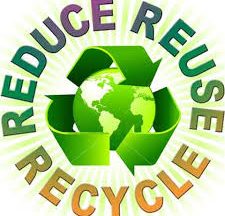 March 2024
March 2024
There’s no quick fix to climate change. No cure exists, only better management of our resources. We can choose to be part of the problem or part of the solution. Building residents, some of whom may feel their individual actions are useless or not worth their effort, need to participate in building-wide initiatives.
Recycle
Recycling occurs in many ways that can prevent items that don’t decompose from ending up in landfills and oceans. It allows our waste products to be turned into something else.
Sorting is the responsibility of those who create waste. Individuals failing to do so increase costs for others. Communities can tighten up their practices, and enforce compliance by residents, thereby reducing the community’s environmental impact.
In high-rise communities, some don’t want to participate. They throw plastic bottles, paper products and glass into the same container as trash because it is convenient. It can be a perpetual struggle to deal with a handful of building residents who throw everything into the nearest bin rather than sorting their trash.
Friendly reminders are seldom effective. Owners can be put on notice that failure to sort trash incurs costs they will be required to pay. Security cameras can be used to identify those who fail to break down boxes before discarding them, and those who fail to sort their trash. They can be charged added costs of having someone manually sort through trash and recycling, or added pickup costs for improperly sorted trash.
Reuse
Many items that can not be recycled can be reused. All it takes is putting these items where others can find them.
A table can be set up for hard goods such as dishware, glasses and pottery. Another area for kitchen equipment such as pots, pans and appliances. For books, a bookshelf is ideal. Separate boxes for electronic (computer) equipment and clothing can address much of what remains.
Reduce
Finally, there are opportunities for high-rise communities to reduce their energy use. Replacing lights with LED lighting is one of the easiest efforts, particularly when they include sensors that automatically turn off lights when an area is not in use.
Green roofs, including vegetation, are good but white roofs can be better.
In practice, condominium corporations are not sufficiently altruistic for this to be effective. They tend not to undertake energy reduction initiatives unless mandated to do so. They don’t want to spend money, and increase condo fees more than absolutely necessary, so delay changes until forced to do so by some other event such as a leaking roof.
 Some communities are sufficiently aware to ensure sinks, toilets, and other water-using appliances are working properly, not wasting water and not unnecessarily increasing water bills. Electricity use concerns are less in communities with unit metering systems where owners pay for the electricity they use.
Some communities are sufficiently aware to ensure sinks, toilets, and other water-using appliances are working properly, not wasting water and not unnecessarily increasing water bills. Electricity use concerns are less in communities with unit metering systems where owners pay for the electricity they use.
Other options for reducing energy use include better insulated windows and re-designing HVAC systems. Adding over-cladding or covering of exterior walls with insulation reduces the energy necessary to heat in winter and cool in summer.







